Lili's Honey
Couldn't load pickup availability
Multiflora Honey is a blend of nectar from a variety of flowers accumulating in a combination of great floral tastes.
Raw Multiflora Honey - Crystallises over time.
Liquid Multiflora Honey - Remains in a liquid state at room temperature for a longer period of time.
Shipping
Shipping
Free Shipping NZ wide on all orders over $50.
$5 shipping fee applies to orders below $50 NZ wide.
We use NZ Post with an estimated 3-5 working days for urban addresses.
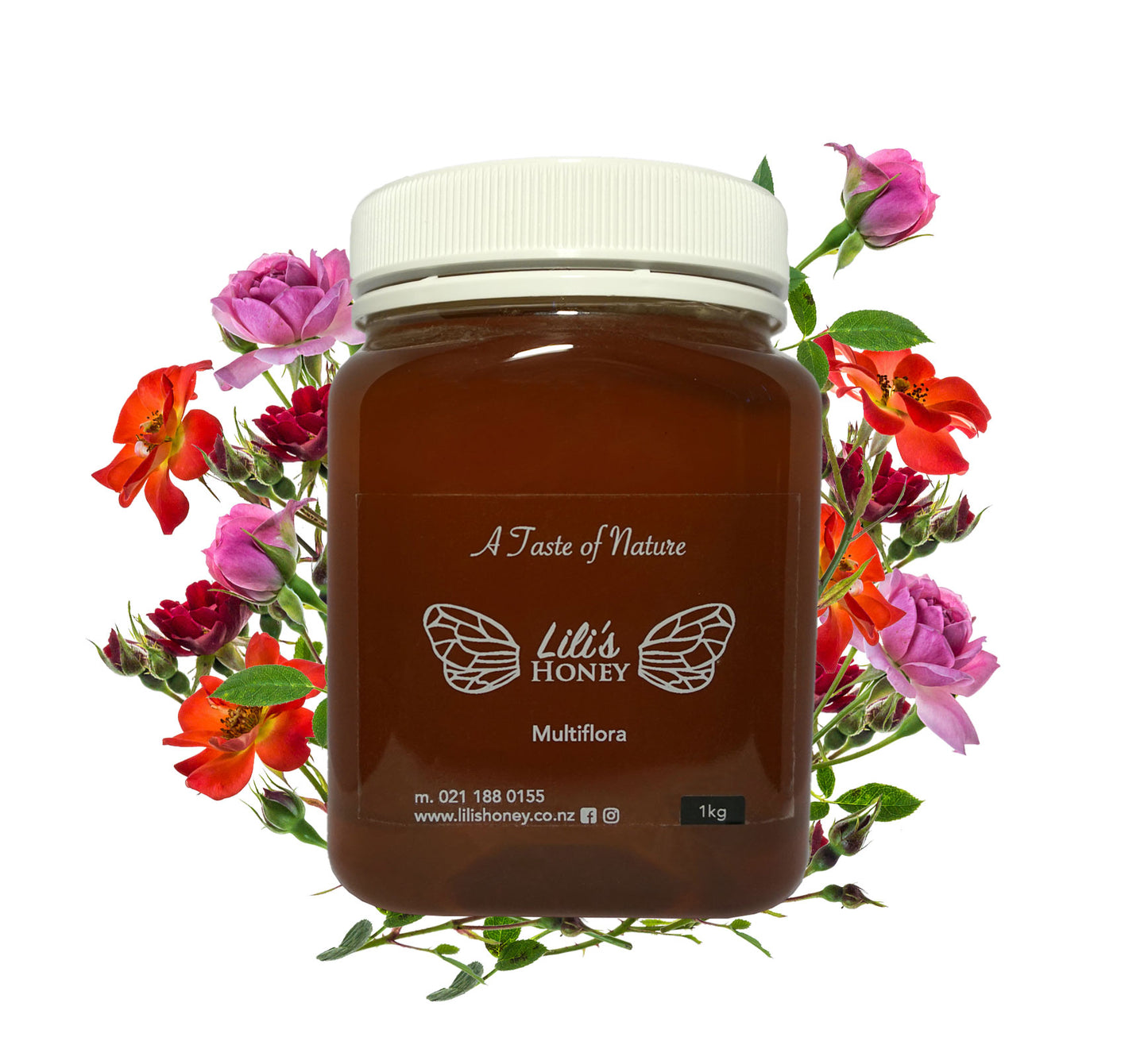
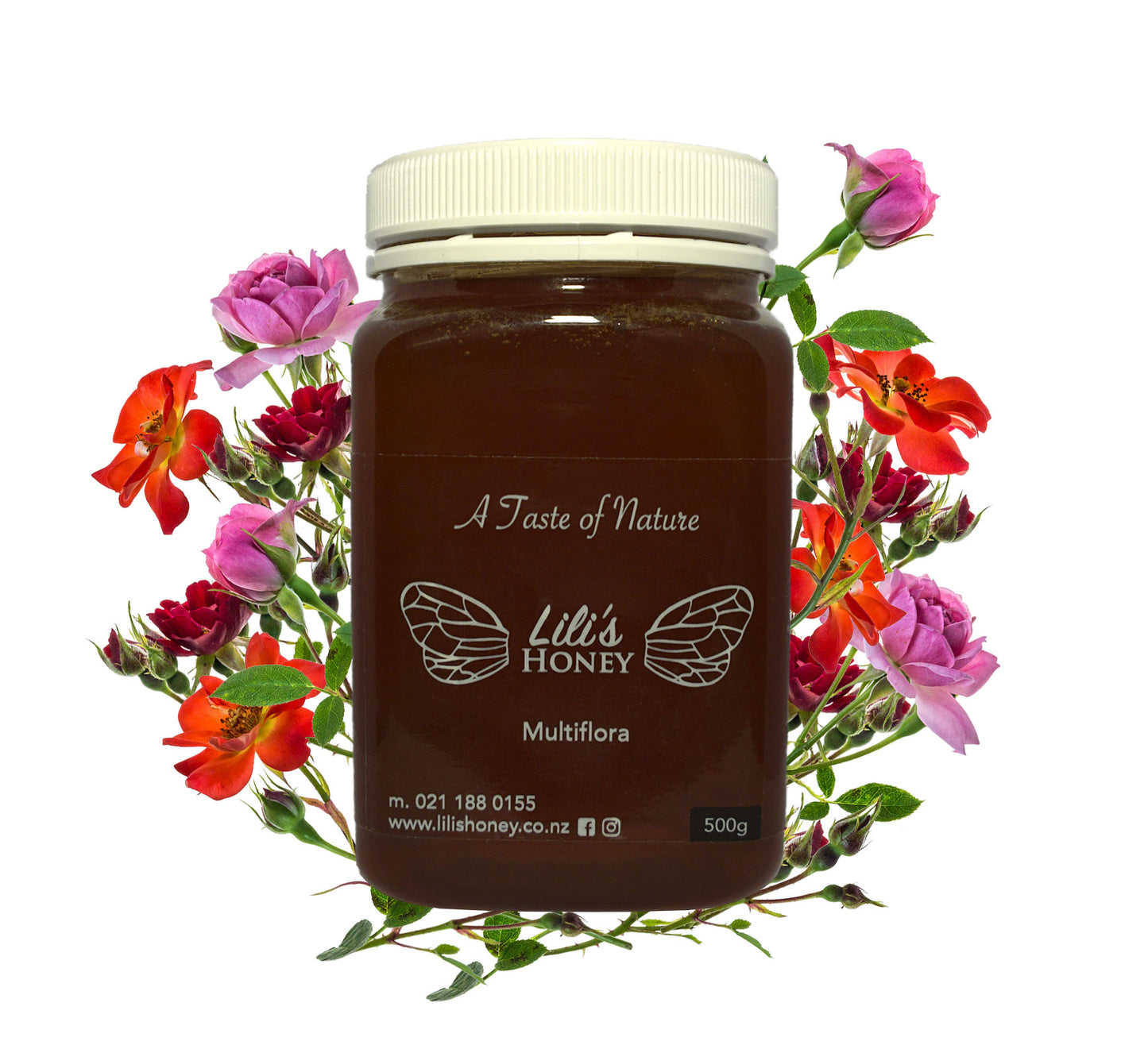
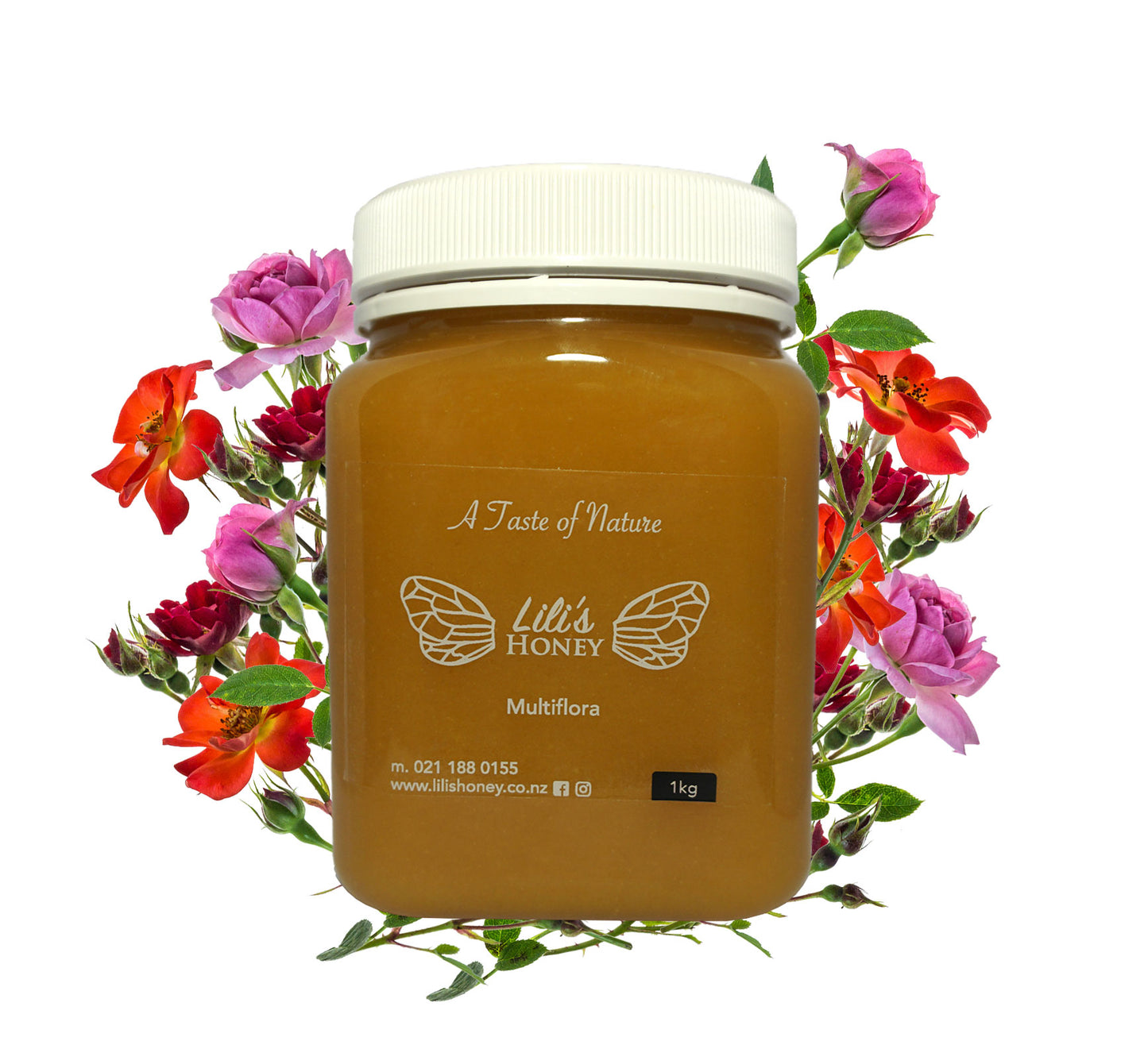
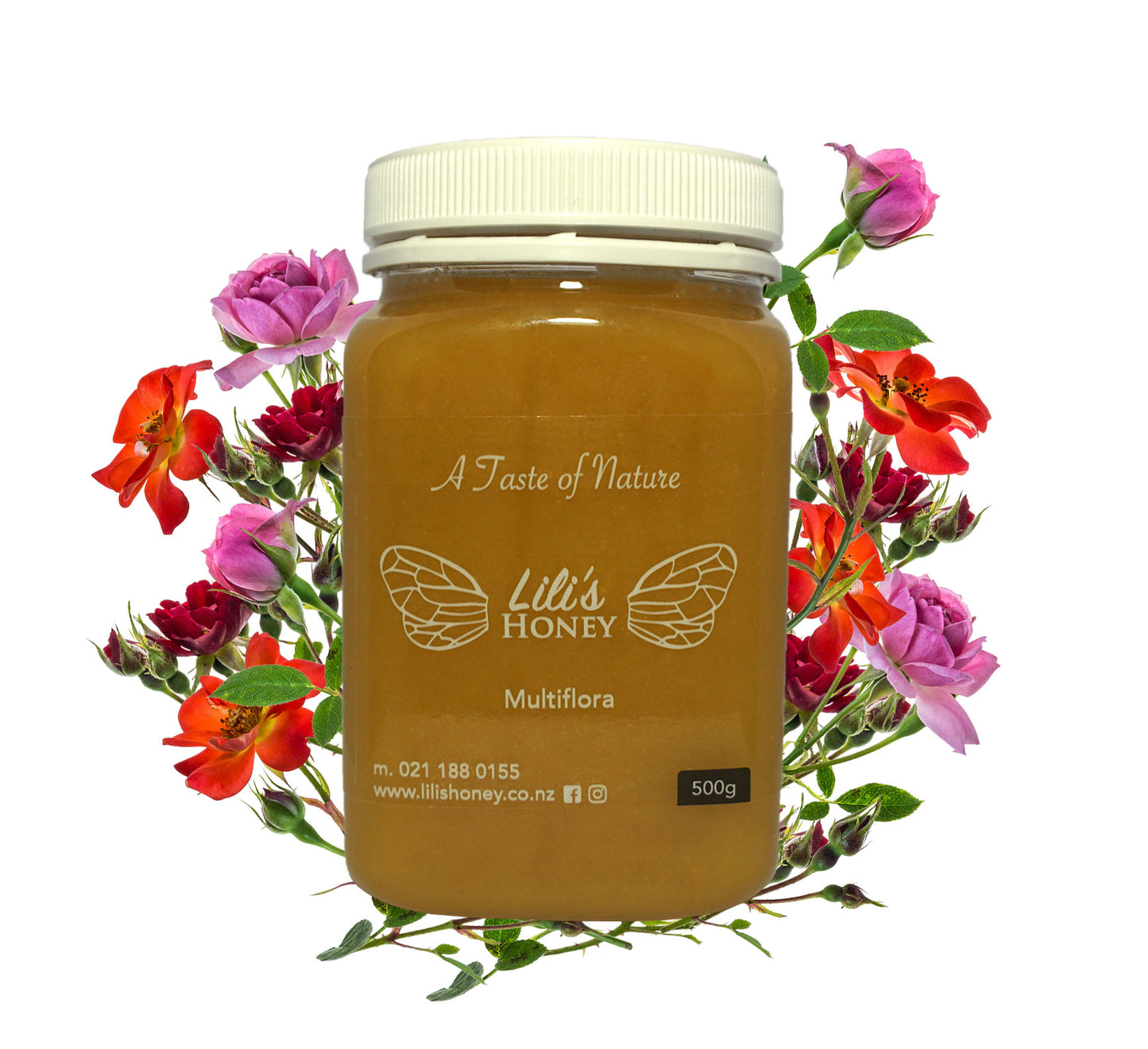
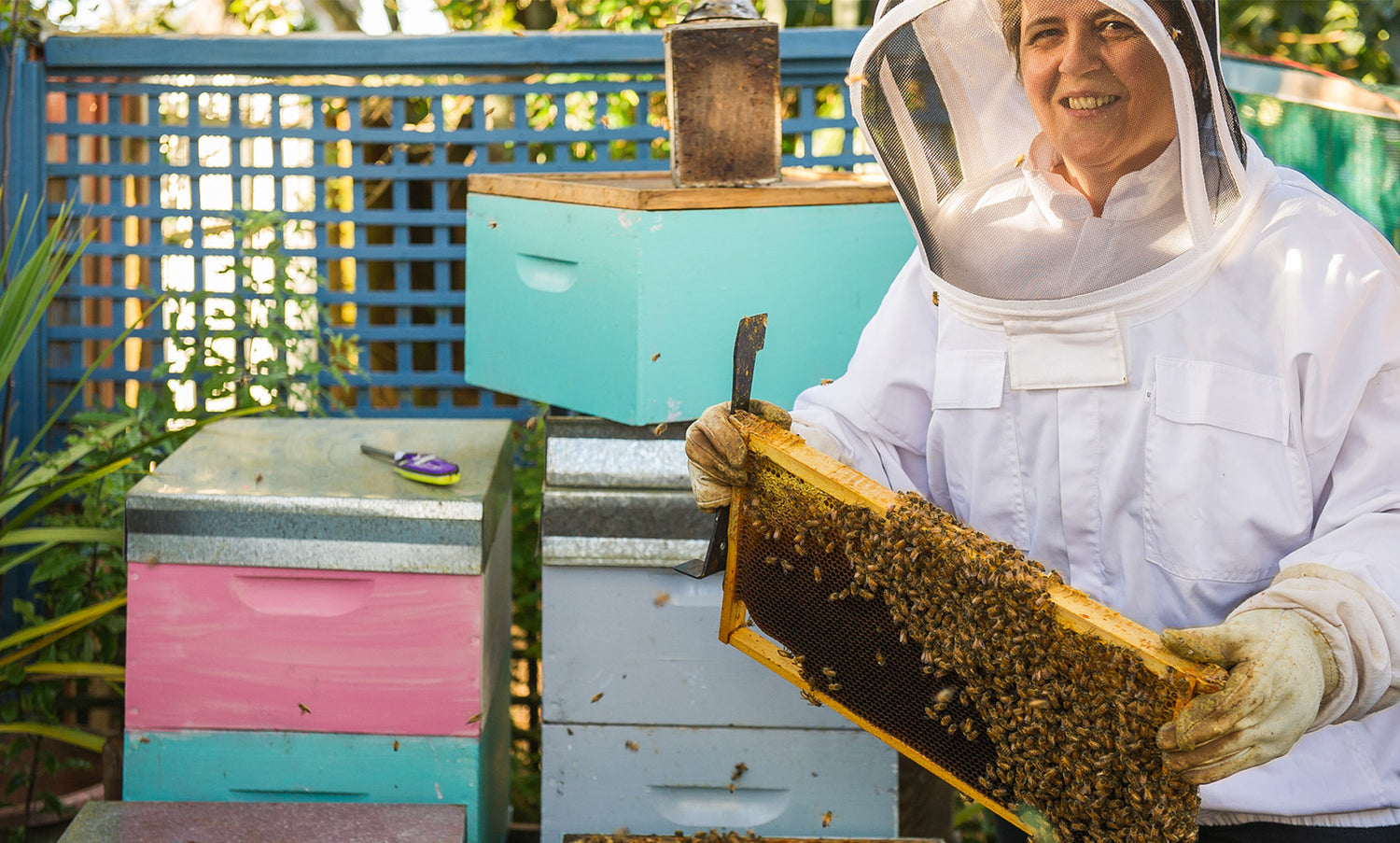
Free Shipping On All Orders Over $50
We are a small family run business with the sole intention to deliver premium New Zealand Honey products to Kiwi homes directly from the hive. No preservatives, nothing but naturally sweet honey.
Description - Multiflora Honey
NZ Multiflora Honey - Available in 500g & 1kg jars.
Lili’s Multiflora Honey is harvested from our hives surrounded by wildflowers, pasturelands, and native plants on the north island of New Zealand. It is the most commonly harvested in New Zealand with plentiful flora where the birds and the bees thrive. Our Multiflora Honey is sold as naturally harvested directly from the hive. It is a blend of flavours from a variety of flora that is found in New Zealand’s North Island. The combination gives our Multiflora Honey a truly unique and rich floral taste that will leave you asking for more. It is also comparable to golden syrup to the point of it being deliciously sweet and smooth.
Lili’s Multiflora Honey is authentically Kiwi and kept exactly how nature intended it; no added sugars, preservatives, or artificial additives. As it granulates and crystalises over time, you can heat the Multiflora honey to maintain a soft texture. If you prefer a harder texture, you can always refrigerate it to achieve this.
Our Multiflora Honey has a smooth texture, perfect as a spread. The mouth-watering flowery aftertaste will always leave you wanting one last spoonful…over and over again. Lili’s Multiflora Honey is an all-purpose natural sweetener for all of your cooking needs. From a healthy breakfast to sauces and dressings. Of course, it’s also the perfect healthy alternative to refined sugar and can be added to a variety of dishes. We urge you to try our Multiflora Honey at least once for its distinctive and complex taste.
Here are some of the most common questions & answers regarding Multiflora Honey
Multiflora Honey - FAQs
What is Multiflora Honey, and what does that mean?
Multiflora honey simply means that bees have collected nectar from a variety of flowers, which creates a blend of flavours. The opposite of multiflora honey would be monoflora, which means that bees have harvested nectar solely from one specific flower.
Considering the plentiful diversity of flowers across New Zealand, it’s safe to say that multiflora honey is rich and flavourful.
Is Multiflora Honey the most common type?
Indeed, it is. Multiflora honey is considered to be the most common around the world as it is defined by any harvesting variety. Essentially, any two different types of flowers from which bees have extracted pollen are considered to create multiflora honey.
This is perfectly natural and common for bees to forage from a wide range of flowers. This leads to a variety of nectar sources and thus, multiflora honey.
What is the difference between raw and liquid multiflora honey?
Raw multiflora honey is minimally processed, usually only strained to reduce wax debris, meaning you can still find the highly nutritious bee pollen in there. Bees themselves store it in the hive for their own use. They use it to feed their queen and nurse their young. The heat used to obtain a sustainable liquid state in multiflora honey eliminates the bee pollen.
Raw multiflora honey is believed to have more health benefits than liquid multiflora honey. It contains trace amounts of nearly 22 amino acids, 31 various minerals, and a plethora of vitamins and enzymes. According to research, it has the potential to reduce heart disease, lower cholesterol, assist in wound healing, and treat coughs.
Raw multiflora honey will crystallise if kept long enough, especially in colder climates, and even before that happens, it will likely have a more grainy texture as a baseline.
Liquid multiflora honey is often pasteurised. The heat necessary to break down the glucose and give it that pourable quality also breaks down things like antioxidants and pollen. Lack of antioxidants and bee pollen significantly reduces its healing properties.
On the other hand, liquid multiflora honey is often preferred for its ease of use and smooth texture. Its pourable quality makes it the easy choice for the home baker or to be used as a breakfast spread.
Bottom line, while there are several significantly more beneficial qualities to raw multiflora honey health-wise, preference, texture, and ease of use are also important qualities that one likes to think about. Depending on the purpose of the multiflora honey you purchase, there’s something for everyone.




